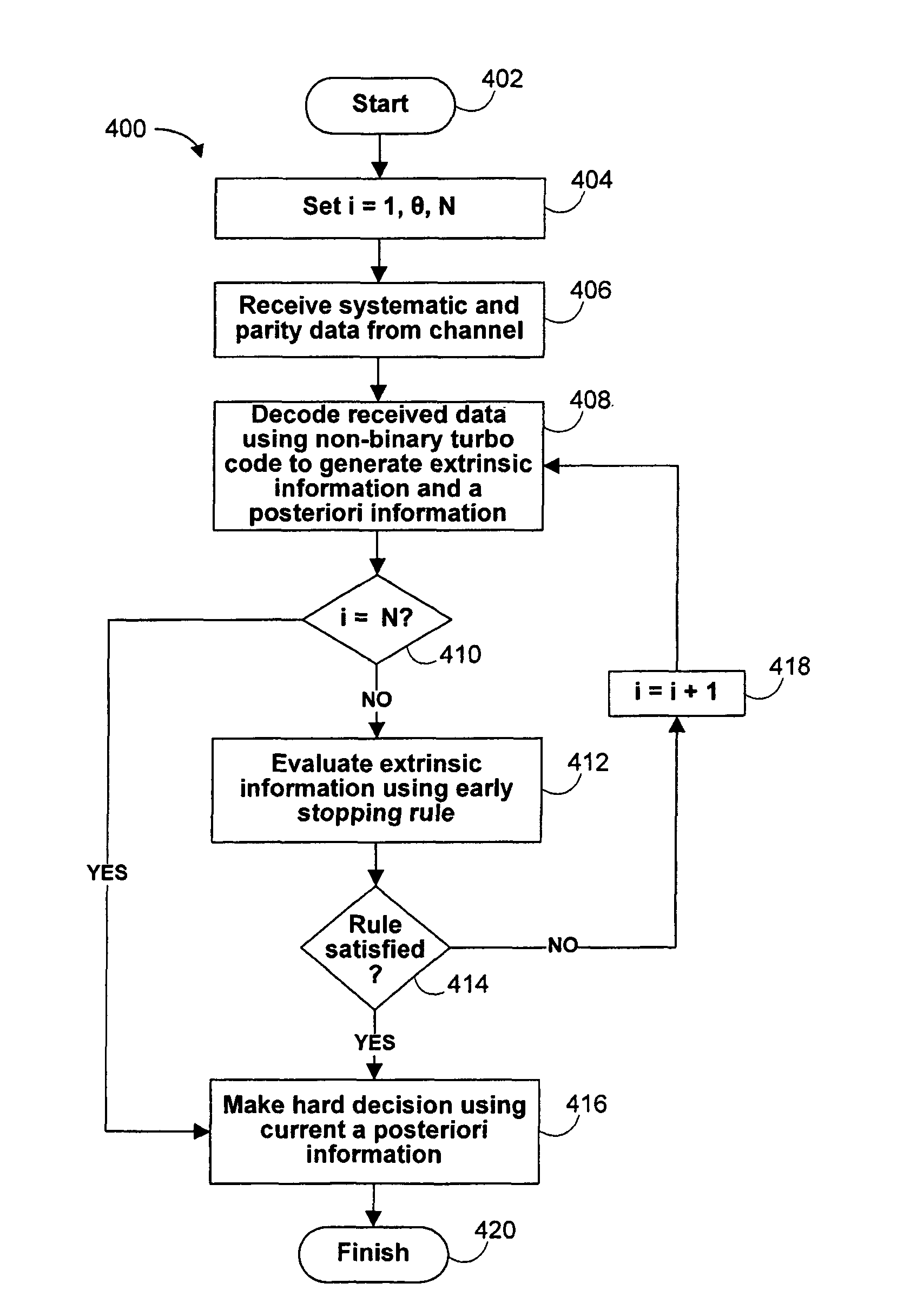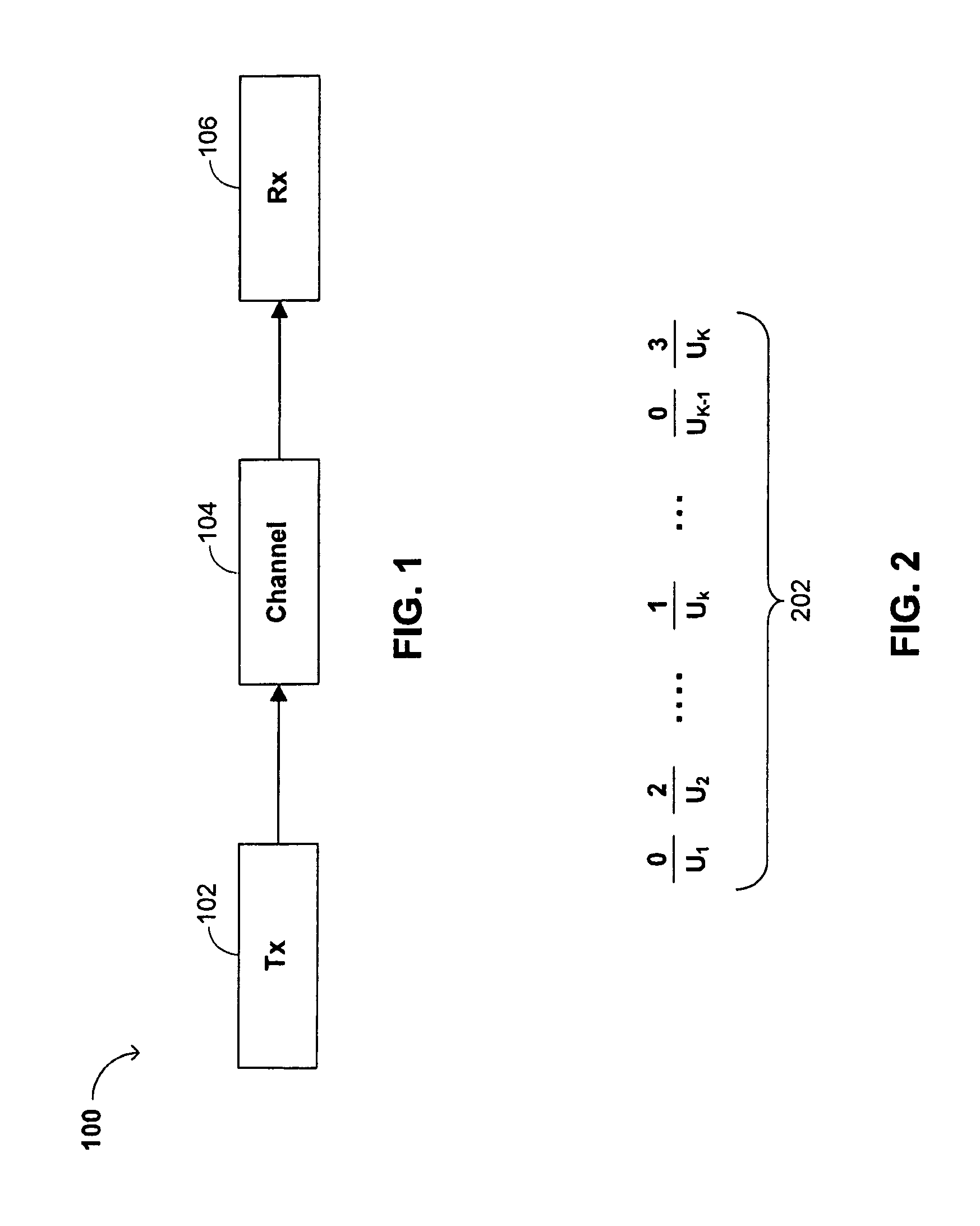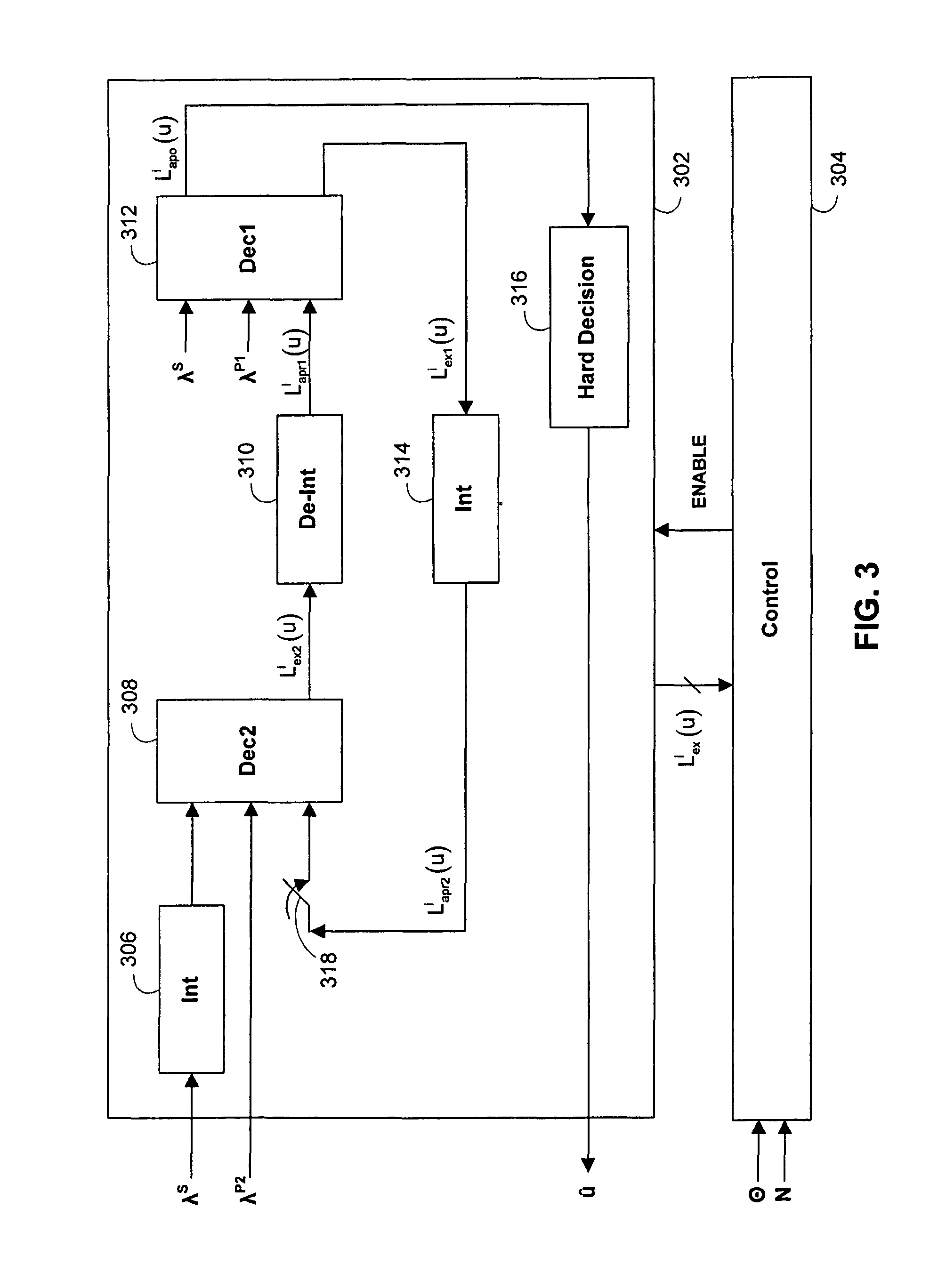Early stopping rules for non-binary turbo codes
a technology of non-binary turbo codes and early stopping rules, which is applied in the field of early stopping rules for non-binary turbo codes, can solve the problems of difficulty in effectively decoding the word, and the techniques for optimizing the efficiency and performance of the engine, and the development of the optimization techniques for binary turbo codes is not as well-developed
- Summary
- Abstract
- Description
- Claims
- Application Information
AI Technical Summary
Benefits of technology
Problems solved by technology
Method used
Image
Examples
Embodiment Construction
[0027]FIG. 1 is a block diagram showing an illustrative data system 100 in accordance with embodiments of the invention. Transmitting circuitry 102 can be operable to encode data for transmission using any suitable techniques. For instance, transmitting circuitry 102 can encode words of systematic data by computing corresponding parity data (e.g., checksums for one or more potentially overlapping parts of the systematic data) and appending the parity data to the systematic data. As another example, transmitting circuitry 102 can perform interleaving within or across different codewords in order to reduce the chance that a given codeword will have an error that cannot be identified or repaired. Transmitting circuitry 102 can also perform other operations in order to facilitate the transmission of data, such as signal pre-emphasis or additional encoding (e.g., using a standard such as eight-bit-ten-bit, or “8B10B” encoding). Transmitting circuitry 102 can be operable to transmit binar...
PUM
 Login to View More
Login to View More Abstract
Description
Claims
Application Information
 Login to View More
Login to View More - R&D
- Intellectual Property
- Life Sciences
- Materials
- Tech Scout
- Unparalleled Data Quality
- Higher Quality Content
- 60% Fewer Hallucinations
Browse by: Latest US Patents, China's latest patents, Technical Efficacy Thesaurus, Application Domain, Technology Topic, Popular Technical Reports.
© 2025 PatSnap. All rights reserved.Legal|Privacy policy|Modern Slavery Act Transparency Statement|Sitemap|About US| Contact US: help@patsnap.com



